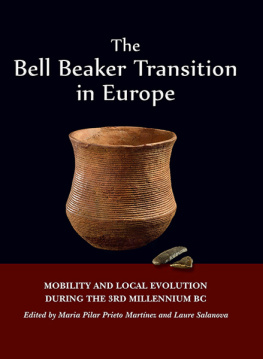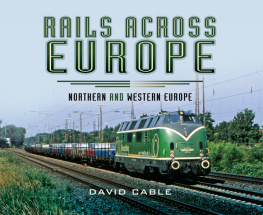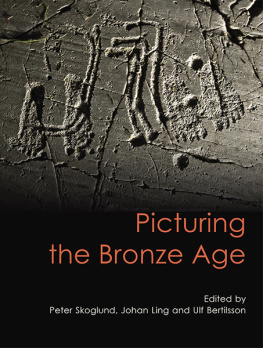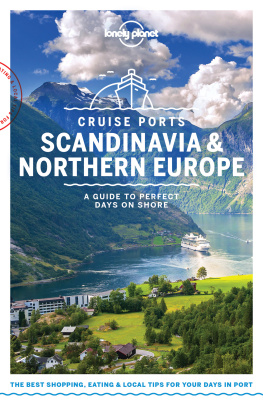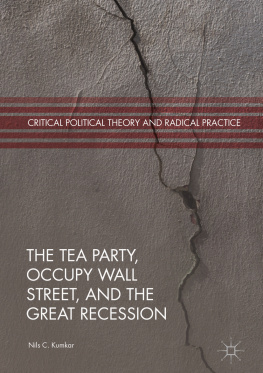Local Societies in Bronze Age Northern Europe
Also by Nils Anfinset and published by Equinox
Metal, Nomads and Culture Contact: The Middle East and North Africa
Local Societies in Bronze Age Northern Europe
Edited by
Nils Anfinset and Melanie Wrigglesworth
First published 2012 by Equinox, an imprint of Acumen
Published 2014 by Routledge
2 Park Square, Milton Park, Abingdon, Oxon OX14 4RN
711 Third Avenue, New York, NY 10017, USA
Routledge is an imprint of the Taylor & Francis Group, an informa business
Editorial matter and selection Nils Anfinset and Melanie Wrigglesworth 2012 Individual contributions the contributors 2012
All rights reserved. No part of this book may be reprinted or reproduced or utilised in any form or by any electronic, mechanical, or other means, now known or hereafter invented, including photocopying and recording, or in any information storage or retrieval system, without permission in writing from the publishers.
Notices
Practitioners and researchers must always rely on their own experience And knowledge in evaluating and using any information, methods, compounds, or experiments described herein. In using such information or methods they should be mindful of their own safety and the safety of others, including parties for whom they have a professional responsibility.
To the fullest extent of the law, neither the Publisher nor the authors, contributors, or editors, assume any liability for any injury and/or damage to persons or property as a matter of products liability, negligence or otherwise, or from any use or operation of any methods, products, instructions, or ideascontained in the material herein.
ISBN 978-1-84553-742-5 (hardback)
British Library Cataloguing-in-Publication Data
A catalogue record for this book is available from the British Library.
Library of Congress Cataloging-in-Publication Data
Local societies in Bronze Age Northern Europe / edited by Nils Anfinset and Melanie Wrigglesworth.
p. cm.
Includes bibliographical references and index.
ISBN 978-1-84553-742-5 (hb)
1. Bronze Age-Europe, Northern. 2. Europe, Northern-Antiquities. I. Anfinset, Nils. II. Wrigglesworth, Melanie.
GN778.22.E853L64 2012
936.8dc23
2011019860
Typeset by JS Typesetting Ltd, Porthcawl, Mid Glamorgan.
Contents
Nils Anfinset and Melanie Wrigglesworth
Charlotte Damm
Lars Forsberg
Mette Roesgaard Hansen
Kristin Armstrong Oma
Anne Lene Melheim
rjan Engedal
Maria A. Yushkova
Mika Lavento
Sophie Bergerbrant
Thomas Eriksson
Peter Skoglund
Christopher Prescott
Nils Anfinset
Nils Anfinset is an associate professor in the Department of Archaeology, History, Culture and Religious Studies, University of Bergen, Norway.
Kristin Armstrong Oma, is a postdoctoral researcher in the Department of Archaeology, Conservation and History, University of Oslo, Norway.
Sophie Bergerbrant is a postdoctoral researcher in the Department of Archaeology and Religious Studies, Norwegian University of Science and Technology, Norway.
Charlotte Damm is a professor in the Department of Archaeology, University of Troms, Norway.
rjan Engedal is a research fellow and consultant at Rdgjevande Arkeologar, Leirvik, Sogn, Norway.
Thomas Eriksson is a research fellow and project director at the Swedish National Heritage Board, UV MITT, Uppsala, Sweden.
Lars Forsberg is a professor in the Department of Archaeology, History, Culture and Religious Studies, University of Bergen, Norway.
Mika Lavento is a professor at the Institute of Philosophy, History, Culture and Art Studies, University of Helsinki, Finland.
Anne Lene Melheim is a postdoctoral researcher in the Department of Historical Studies, University of Gothenburg, Sweden.
Christopher Prescott is a professor in the Department of Archaeology, Conservation and History, University of Oslo, Norway.
Mette Roesgaard Hansen is an archaeologist at the Museum of Thy and Vester Hanherred, Denmark.
Peter Skoglund is a researcher in the Department of Historical Studies, University of Gothenburg, Sweden.
Melanie Wrigglesworth is a research fellow at Bergen Museum, University of Bergen, Norway.
Maria A. Yushkova is a research fellow at the Institute for the History of Material Culture, Russian Academy of Sciences, St Petersburg, Russia.
We would like to thank all participants of the conference Regions on the Periphery of the Bronze Age of Northern Europe held in Bergen, Norway, 1314 March 2008, for very stimulating days discussing various topics connected to the Bronze Age. Also, we would like to thank all those who have contributed to this book. The conference and book would not have been possible without economic and logistic support from Bergen Museum, Bendixens Legat, Letterstedska Frening and Bergen University Fund, and we are very grateful for this support. We would also like to thank Jane Read, Gina Mance and Hamish Ironside for their professional editorial help. Last but not least we are particularly thankful to Janet Joyce at Equinox for publishing this book.
Nils Anfinset
Melanie Wrigglesworth
Bergen
Nils Anfinset and Melanie Wrigglesworth
Background
Our departing point for this collection of chapters on the North European Bronze Age has been that our conception of this region is generally framed by two major components. One is the national component, as archaeology per se was a significant part of the national awakening in the nineteenth and early twentieth centuries. Obviously this focused on people, land and unity in order to build a common future. The second component is the fact that the central European Bronze Age (CEBA) has over the past decades played an increasing role in our understanding of the Bronze Age in the northern part of Europe as well. This has political and economic reasons due to the initial development (and later the expansion) of the European Union. This was particularly seen through the 1990s with the inclusion of new member states and the focus on the Bronze Age as a pan-European culture, not unlike the earlier national archaeologies focusing on building a common identity based on a common past. In terms of material expressions the CEBA is particularly rich and expressive, quite different from other parts of Europe, which regard these as peripheral.
Now, this may be so, but the fact that we are living in a globalized world has led us to ask questions on these relations: Is the Bronze Age of northern Europe really still a bleak contrast to the CEBA, or are there other factors that may count for both a different understanding of this diverse region and should it possibly be interpreted in different ways? What role do local societies play in general and here in terms of the Bronze Age? Do they have an impact on the greater world, or is it just a one-way influence from south to north? Why is it that the greater part of northern Europe is ignored when trying to understand this greater picture of influences and processes? Rarely is northern Fennoscandia considered, and even less the Russian part of this region. Language and politics may be two reasons for this, but in order to understand this greater picture and the dynamics of both local societies and regional entities we have to engage with this part of northern Europe as well. We do not claim to present the ultimate solution and approaches, but see this as a starting point. In this way we at least wish to move away from national perspectives on archaeological interpretation and theory. This is, of course, to balance on a razors edge: on the one hand we want to move closer to the wider world; on the other hand we want to understand what is happening with local societies in these greater processes of interaction and change that are so apparent in the Bronze Age.




